AMD Radeon RX 7800 XT GPU Review: The best VFM 1440P gaming card on the market right now
AMD Radeon RX 7800 XT GPU Review: The best VFM 1440P gaming card on the market right now
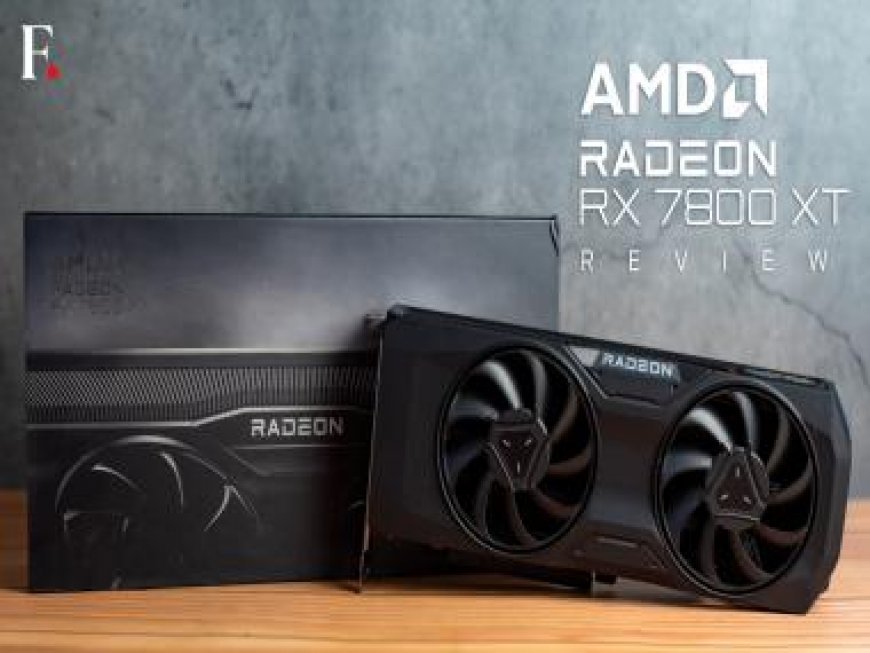
Pros:
– Phenomenal performance at 1440P considering the price
– 16GB of superfast VRAM
– Memory bandwidth
– Quiet reference cooler
– AV1 support at a hardware level
– Price to performance
Cons:
– Power draw is still on the higher side
– Ray tracing performance can be a lot better
– Developers tend to be slow with AMD’s software enhancements
Rating: 4.5/5
Pricing: Rs 44,900 for the reference design.
GPUs of the current generation haven’t been that impressive if we are being honest, especially when you consider the kind of specifications and pricing that we have been seeing. This stands especially true for GPUs from NVIDIA. Thankfully, AMD hasn’t fallen into that trap with their latest GPUs, the Radeon RX 7800 XT.
From our initial testing, we can safely say that right now, if you’re looking to build a PC for 1440P gaming, and would also like to stream a little, the RX 7800 XT is the GPU to get. For starters, it uses AMD’s latest RDNA3 architecture, possibly, their best graphics architecture for years and one that goes toe-to-toe with anything that NVIDIA has to offer.
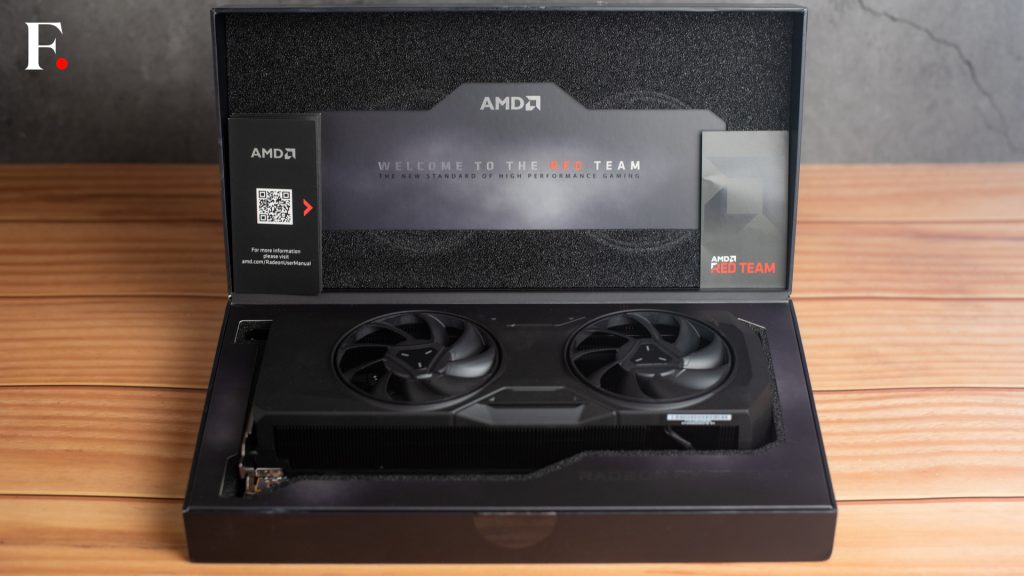
Second, and this is even more important, it comes with 16GB of GDDR6 VRAM, which means you have all the buffer you need to use the complete potential of a powerful SoC.
AMD is not going for the title of the fastest GPU on the market, although, it is pretty close to that. Instead, it proposes to offer users a value that you simply can’t beat. At Rs 44,900, the RX 7800 XT is about Rs 15,000-20,000 cheaper than a comparable RTX 4070, which comes with 12GB of VRAM. The RX 7800 XT is priced similarly to the RTX 4060Ti, but considerably better in every aspect imaginable.
There are some issues though. Like most of AMD’s offerings, the RX 7800 XT is limited by its ray tracing capabilities. Furthermore, AMD’s AI and software solutions, like FSR aren’t really supported by a lot of developers, who still tend to go with NVIDIA’s solutions. However, if these solutions are things that you don’t really care for, and like most gamers out there, you also don’t care about ray tracing, the sheer brute strength of AMD’s offering, combined with its price, is more than enough to see you through all scenarios.
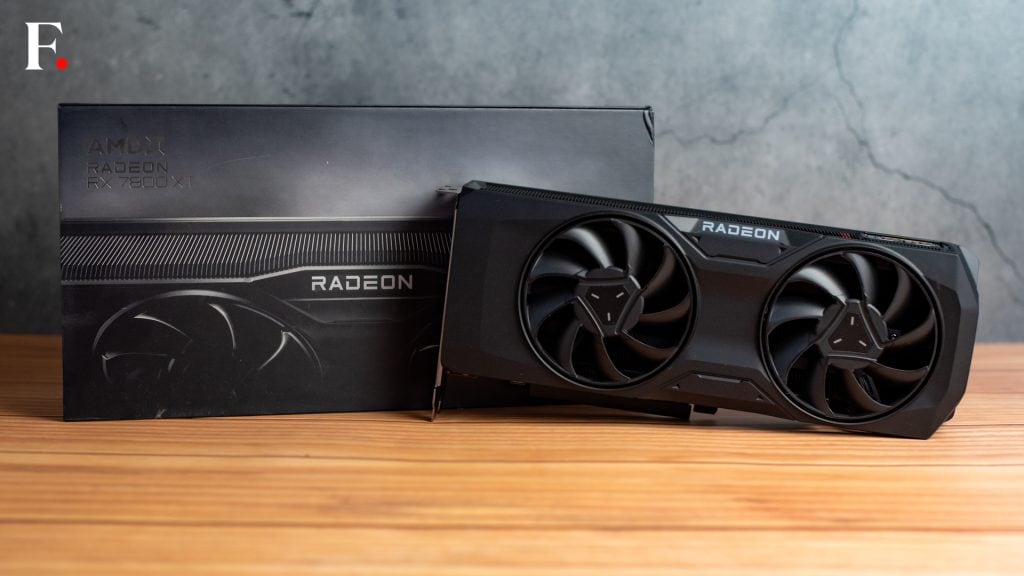
AMD Radeon RX 7800 XT GPU Review: Specifications and Features
When AMD rolled out their brand new Radeon RX 7000-series graphics cards, they highlighted three key elements in their fresh design. First up, they introduced a spanking new microarchitecture called “RDNA 3.” And then, they brought in a whole new manufacturing process. And finally, the third exciting tech twist is the new innovative chiplet design, which made its debut in the first AMD Radeon RX 7000-series graphics cards, the RX 7900 XTX and the similar Radeon RX 7900 XT.
Then, AMD launched the RX 7600, which went back to the monolith design. With the 7800XT, we again get to see why AMD went for a Chiplet-style design for the two headliners of the RX 7000 series.
Historically, when it comes to processors and graphics cards, they’ve mostly followed the traditional route of being crafted as one large chip, often called “monolithic” designs. Chiplets, on the other hand, take a different approach by combining multiple smaller chips into one unified component. Monolithic chips usually have the upper hand in terms of performance, but chiplets make up for this by offering greater scalability and cost savings.

While chiplet designs have been around for quite some time, we’ve witnessed a surge in their popularity recently. They bring some distinct advantages to the table, especially when addressing the challenges that the tech industry faces today, with a strong focus on improving manufacturing efficiency.
The Radeon RX 7800 XT follows a chiplet design, similar to what we saw in the RX 7900 XTX and the RX 7900 XT. This design centres around a massive Graphics Chip Die (GCD), which packs 60 compute units.
The Radeon RX 7800 XT is manufactured using TSMC’s 5nm & 6nm process. It boasts 240 Texture Mapping Units, 96 Raster Operation Processors, and 60 Ray Tracing units. With 3,840 Streaming Processors, it operates at a base clock speed of 2,124MHz, with the ability to boost up to 2,430MHz for some extra grunt.
For cache, we get four Memory Cache Dies (MCDs). Each of these MCDs supports a 64-bit memory interface and boasts 16MB of L2 cache. This configuration gives the RX 7800 XT an impressive 256-bit memory interface and a generous 64MB of L2 cache in total.
We get 16GB of GDDR6 memory and a 256-bit memory interface, delivering a maximum bandwidth of up to 624GB/s, thanks to AMD’s Infinity Cache technology.
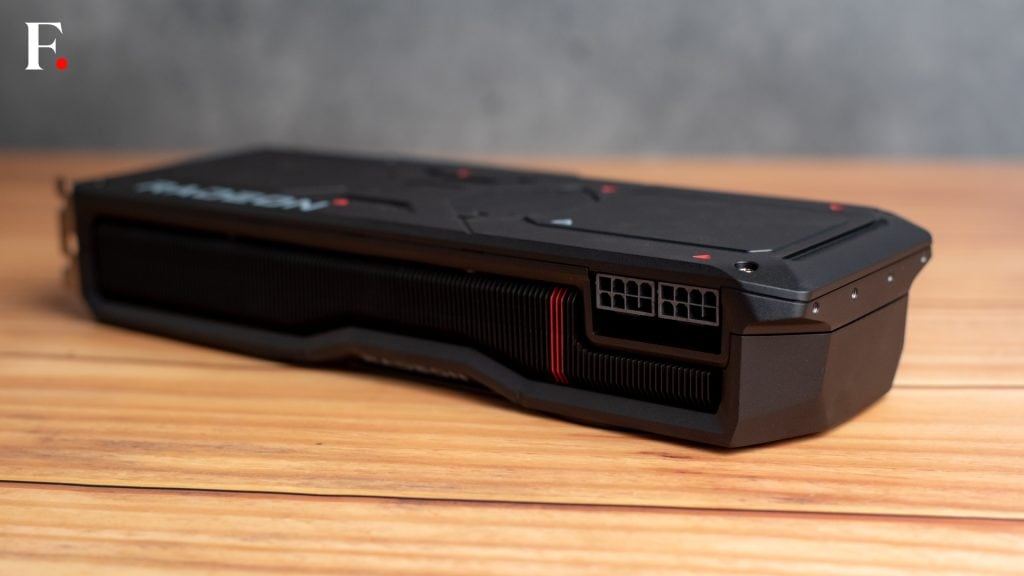
You also get support for SAM, or Smart Access Memory, which is like a direct line of communication between the GPU and CPU. It allows the GPU to send excess frames from its VRAM to the system RAM when the VRAM is running out of space. Put simply, SAM is a nifty optimization trick that makes it easier for the processor to tap into a graphics card’s VRAM memory.
We received a reference unit of the Radeon RX 7800 XT from AMD for review. This card is equipped with two internal 8-pin PCIe power connectors and offers three DisplayPort connectors and an HDMI port on its rear I/O panel. The reference card uses a dual-fan thermal solution that’s just a smidge wider than your typical dual-slot card.
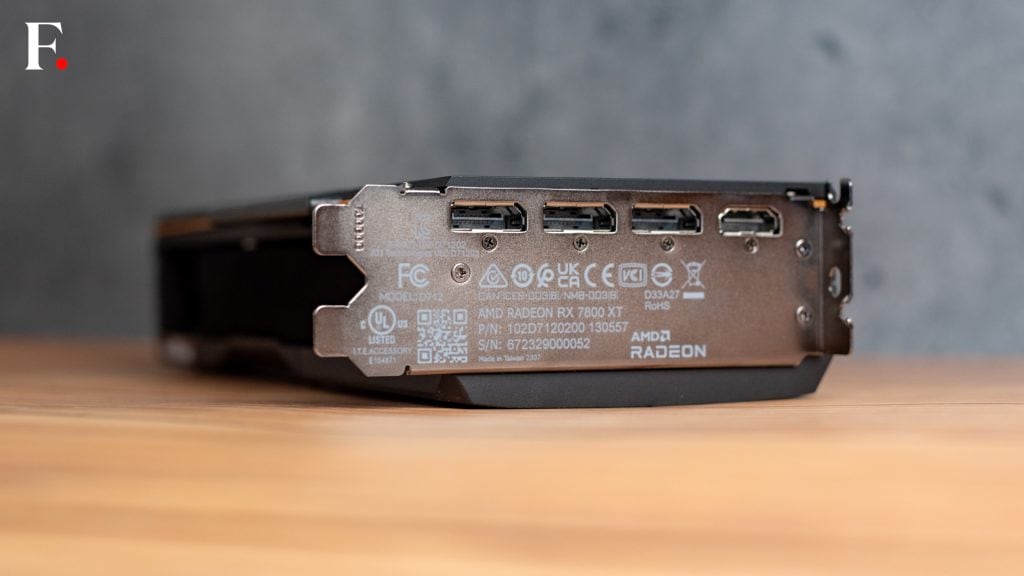
As for software features, we get to see two new ones with the 7800 XT. Well now exactly, new, Since AMD had teased them some time ago.
AMD first teased FSR 3 back in November 2022, shortly after NVIDIA unveiled DLSS 3. DLSS 3 relies on the tensor cores in RTX 40-series graphics cards to insert AI-generated frames between traditional frames, resulting in significant framerate boosts and smoother visuals. In contrast, AMD’s FSR 3 leverages “Fluid Motion Frames” technology to achieve a similar goal but through more traditional frame interpolation rather than machine learning. Notably, it doesn’t require dedicated AI hardware like DLSS 3.
AMD initially teased Hyper-RX on November 22. It’s not exactly a brand-new feature; instead, it’s a single switch that activates several existing Radeon Software technologies all at once, including Radeon Super Resolution, Radeon Boost, and Radeon Anti-Lag. This combined action dramatically enhances both framerate and responsiveness in games.
These AI-accelerator programmes will be a game changer for AMD, just like DLSS was for NVIDIA, especially for gamers who are into fast-paced games that demand a higher refresh rate.
AMD Radeon RX 7800 XT GPU Review: Our test rig
For our testing, we teamed up our Radeon RX 7800 XT with an AMD 7800X3D processor, backed by 32GB of Kingston Fury DDR5 RAM, rated at a speedy 6000 MT/s. All of this hardware was connected to a Gigabyte Aorus X670E Master motherboard. We kept the CPU cool using Cooler Master Masterliquid PL360 Flux. the whole setup was powered by a reliable CoolerMaster MWE 1250W V2 80 plus gold PSU.
Our testing procedure always maintains stock settings without any overclocking or tweaks. The only adjustment we made was to enable XMP (EXPO in this context), ensuring that our RAM was running at its specified speed. We also checked that ReBAR, or Smart Access Memory (SAM) as AMD calls it, was enabled. AMD typically enables this feature by default if your motherboard and GPU support it.
While not all games see significant improvements with ReBAR or SAM, those that do can enjoy a notable 18-20% boost in frame rates compared to systems that lack the option to enable SAM or ReBAR.
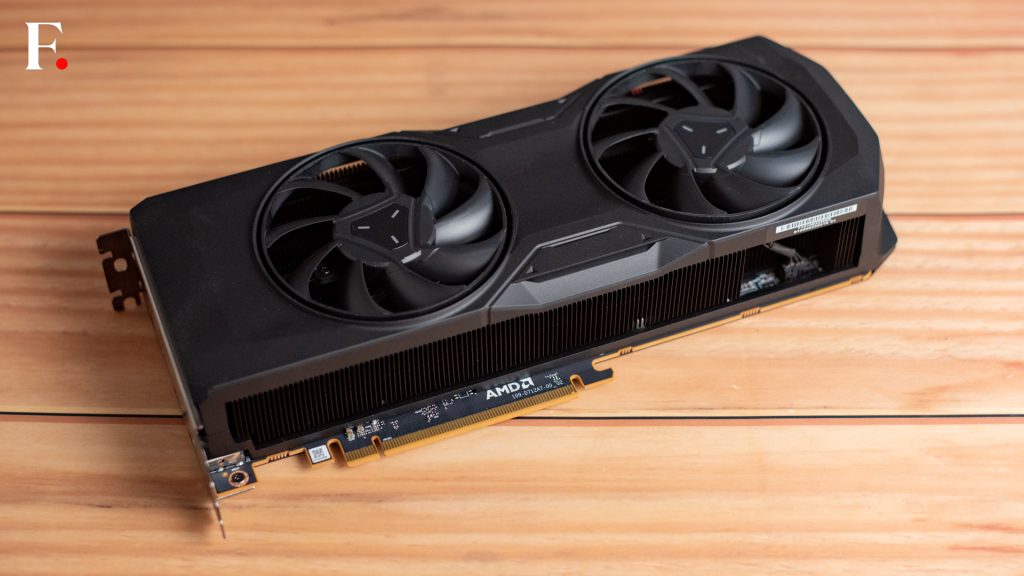
During our testing, we cranked up the games to their highest possible settings whenever feasible. Additionally, we had FSR (FidelityFX Super Resolution) enabled in all games that supported it. We couldn’t test put FSR 3.0 as we did not have access to games that would support this feature, while we ran our benchmarks.
And one last things. The 7800XT comes equipped with built-in support for AV1 encoding and decoding at the hardware level, which is fantastic news for streamers. AV1 offers a substantial improvement in image quality when compared to H.264, all while demanding only a fraction of the bitrate. This means that video game streaming with AV1 encoding puts far less stress on your computer’s resources compared to the traditional H.264 standard.
AMD Radeon RX 7800 XT GPU Review: Performance
The RX 7800 XT truly shines as an exceptional GPU for 1080p gaming. It handles most games with ease, delivering smooth performance. It’s only when you throw ray tracing games like Cyberpunk 2077 at it, maxing out all the graphics settings, that it struggles to maintain a frame rate above 60 fps. However, it’s worth noting that Cyberpunk 2077 is a notorious resource hog, and it has pushed even some of NVIDIA’s previous-generation top-tier cards to their limits.

That being said, in our benchmarks, the RX 7800 XT held its ground admirably across various games and scenarios.
AMD has positioned the RX 7800 XT as a 1440p gaming card, and what’s truly remarkable is that it excels in this department. It delivers fantastic performance at this resolution, making it an excellent choice for gamers looking to step up their visual experience without sacrificing frame rates.
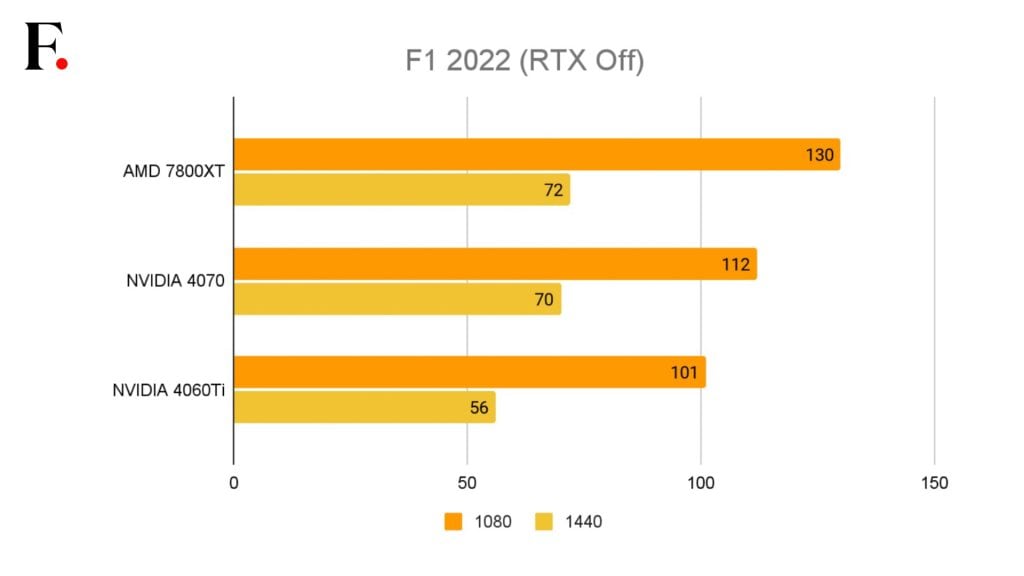
These performance numbers reflect the RX 7800 XT’s native capabilities, so they showcase what the raw silicon can achieve without resorting to any magic tricks like AI upscaling for extra performance.
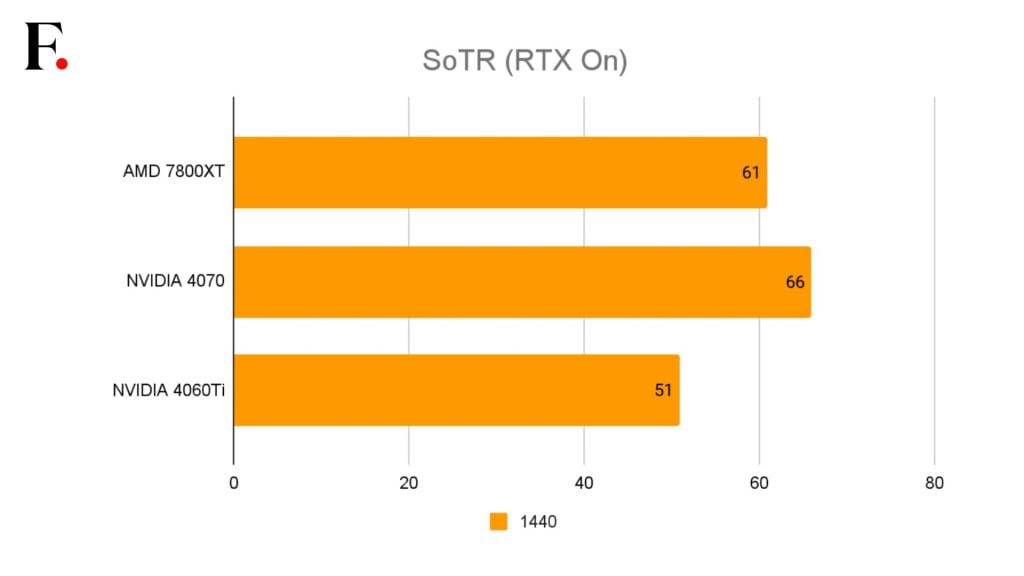
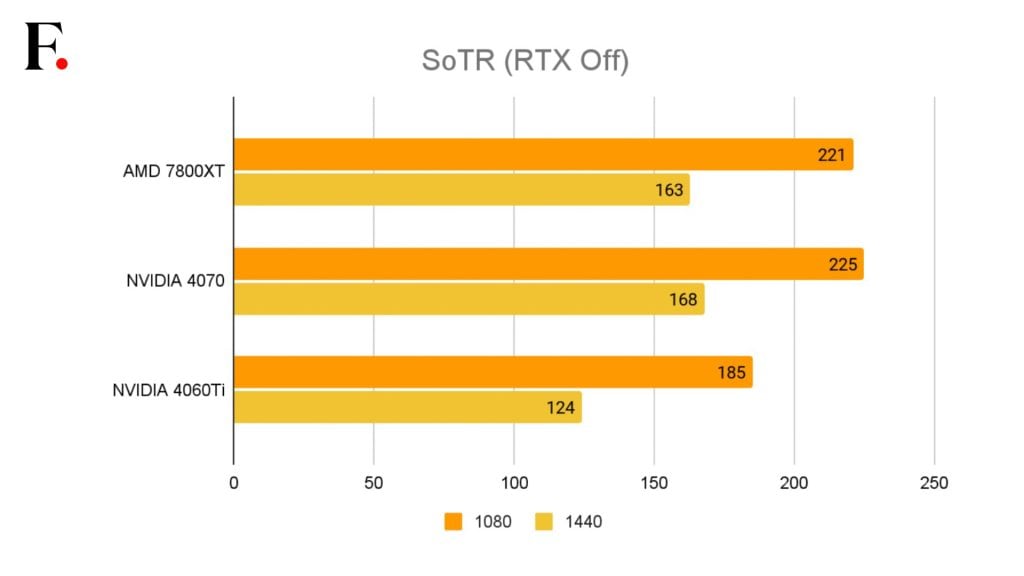
However, it’s worth noting that you do have the option to use upscaling techniques with the RX 7800 XT, although it’s not always a guarantee that you’ll opt for AMD’s FSR, especially when compared to NVIDIA’s DLSS, which has generally been more favoured by developers.
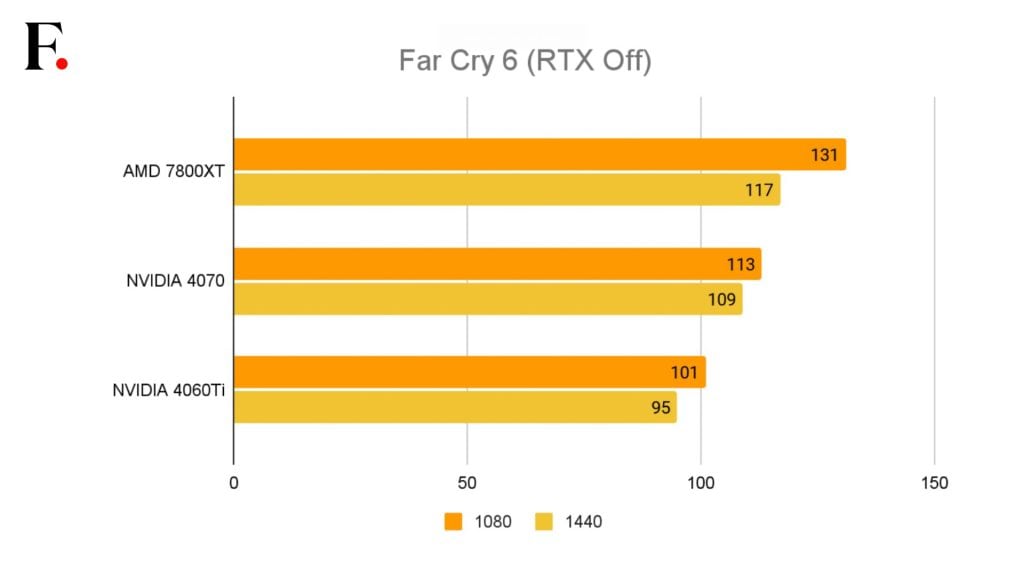
This is particularly true given that some FSR-supporting games haven’t received updates to improve the initial, somewhat shaky, implementation of AMD’s technology. Here’s to hoping this changes in the years to come, because AMD’s current generation of CPUs, certainly have the chops to smash its competition from team green to the ground, barring Ray-tracing performance.
Surprisingly, the RX 7800 XT even has the muscle for 4K gaming, which is expected from a card offering 16GB of VRAM along with performance that competes with the high-end GPUs from the last generation. Do note that running upcoming titles like the highly anticipated GTA VI on 4K will be a tad challenging, but still manageable, provided you are willing to dilute the details down a bit.
AMD Radeon RX 7800 XT Review: Conclusion
While the AMD Radeon RX 7800 XT might run a tad warm and consume a bit more power than some may prefer, it’s challenging to fault the card on any front. In the world of desktop components, price and performance are always the key considerations, and the Radeon RX 7800 XT excels in both areas.
Despite being categorized as an upper mid-range card, it competes at a level with arguably two of the best GPUs from the previous generation, the RX 6800 XT and the RTX 3080. In many standard gaming scenarios, it performs as well as or even outpaces the RTX 4070, with only games that heavily focus on the latest ray tracing effects giving a clear advantage to NVIDIA.

If you desire that extra ray tracing performance or the enticing features of DLSS 3.5 and Frame Generation, you’ll need to be willing to pay a premium.
Ultimately, the RX 7800 XT’s competitive edge comes down to its pricing. While it’s not a budget-friendly card by any means, with a Rs 44,900 price tag, it still manages to bring down the cost of achieving this level of raster performance. It offers a solid 16GB VRAM configuration, making it an attractive choice for gamers looking for a balance between performance and cost.
Based on everything we’ve seen, it’s clear that the Radeon RX 7800 XT is positioned as AMD’s standout graphics card for this generation, surpassing offerings from both NVIDIA (team green) and AMD themselves (team red). If you’re in the market for a GPU that strikes the right balance between price, performance, and thermal efficiency, the RX 7800 XT appears to be the top choice.
Until NVIDIA starts taking gamers seriously, reevaluating its pricing strategy, the Radeon RX 7800 XT stands as the most compelling graphics card in this current generation. It’s a strong and easy recommendation for anyone looking for a GPU that delivers on multiple fronts without breaking the bank. Seriously, if you’re looking to build a PC in 2023, look no further, the RX 7800 XT is all you need.
What's Your Reaction?



























































